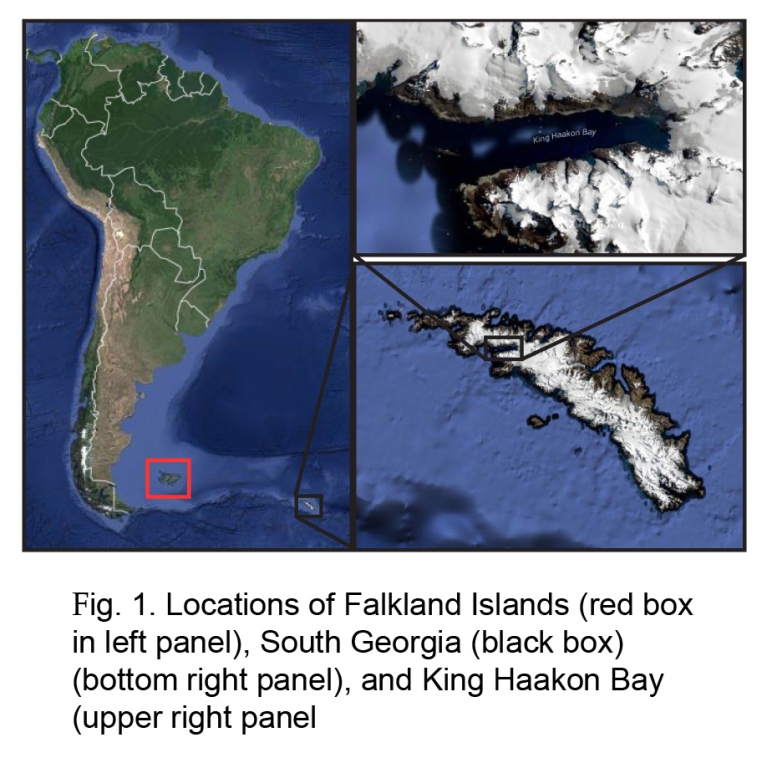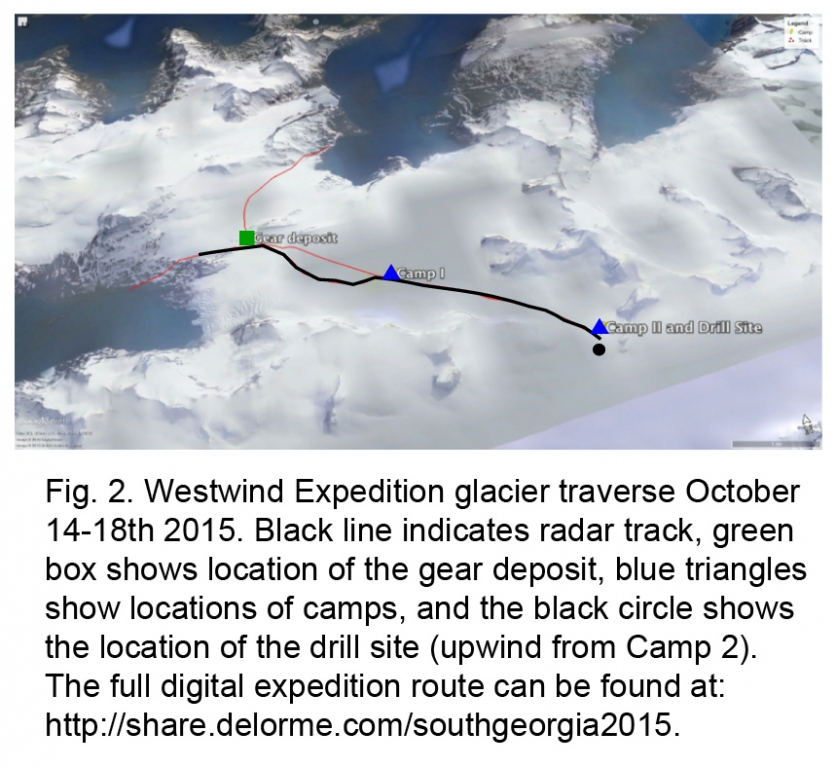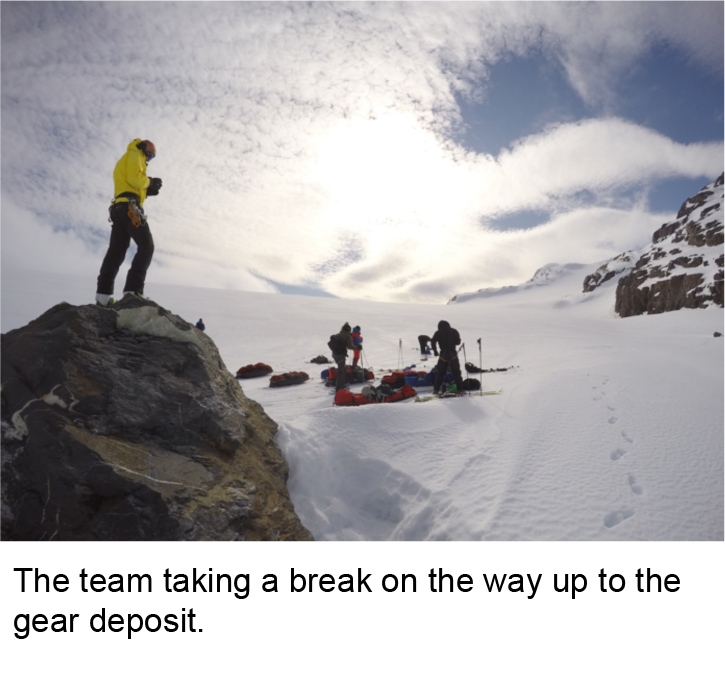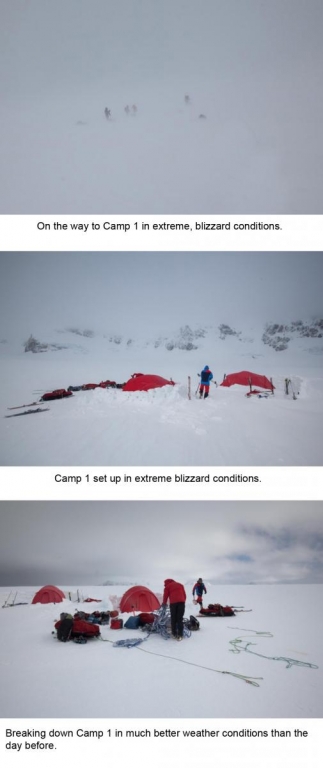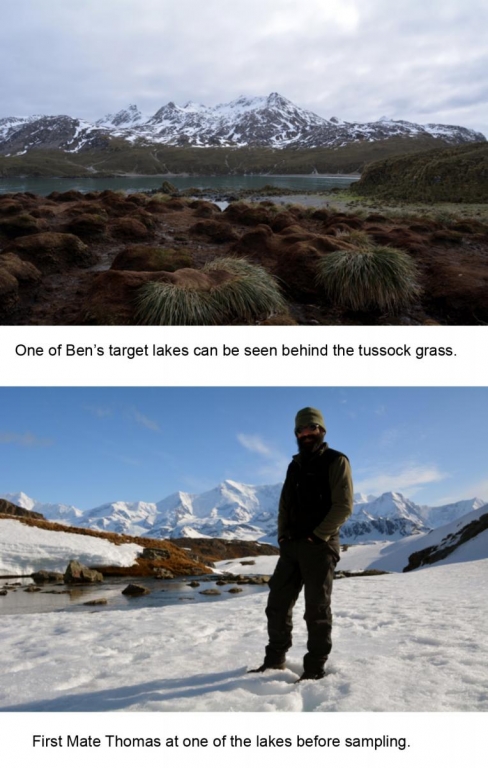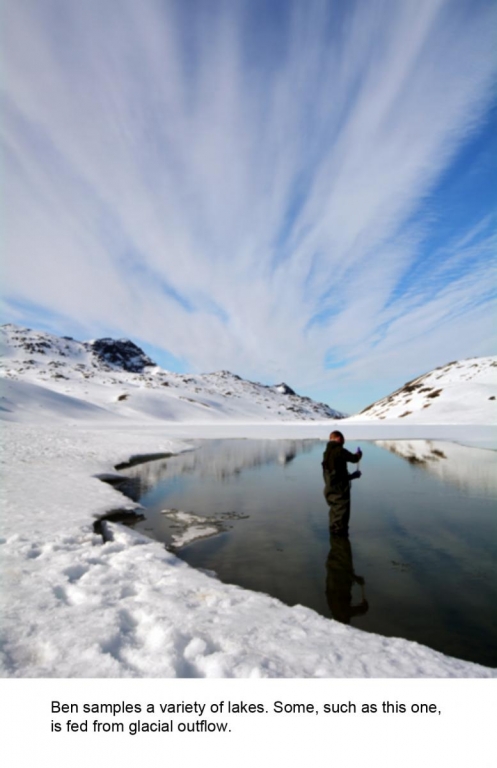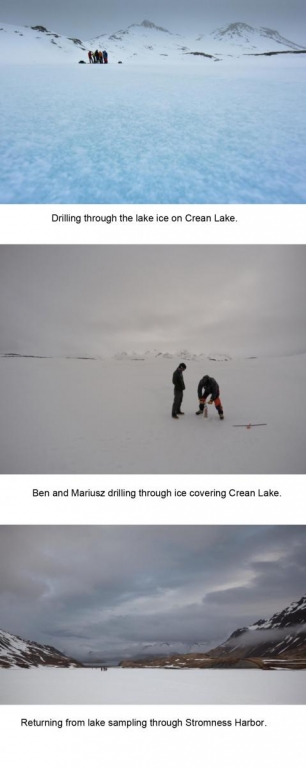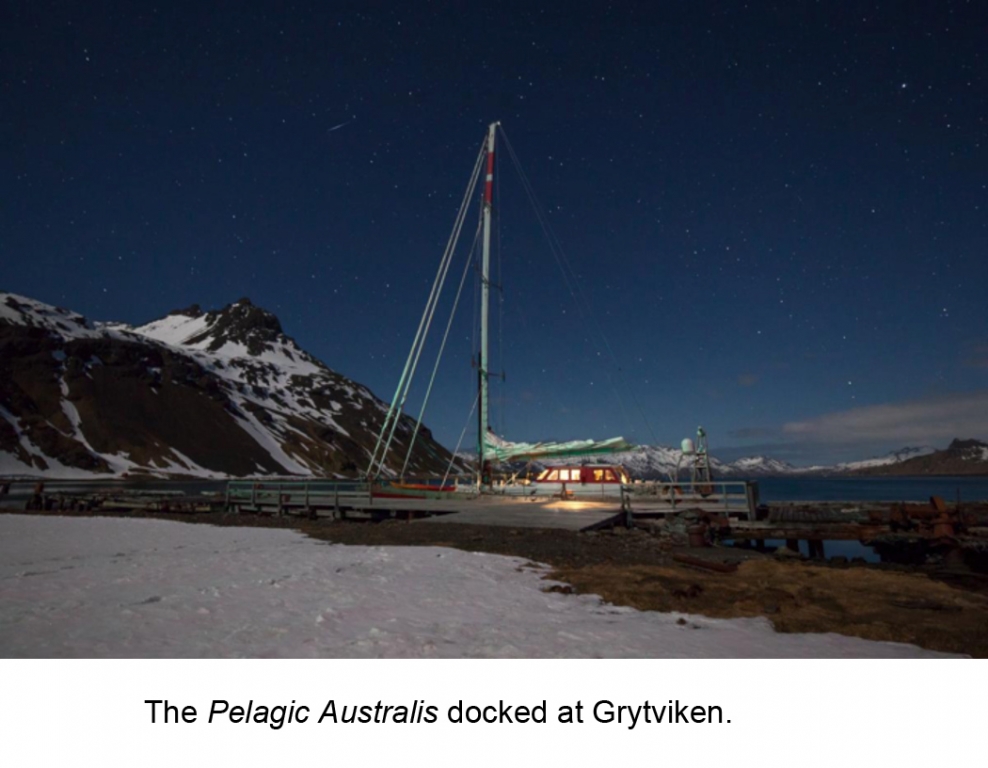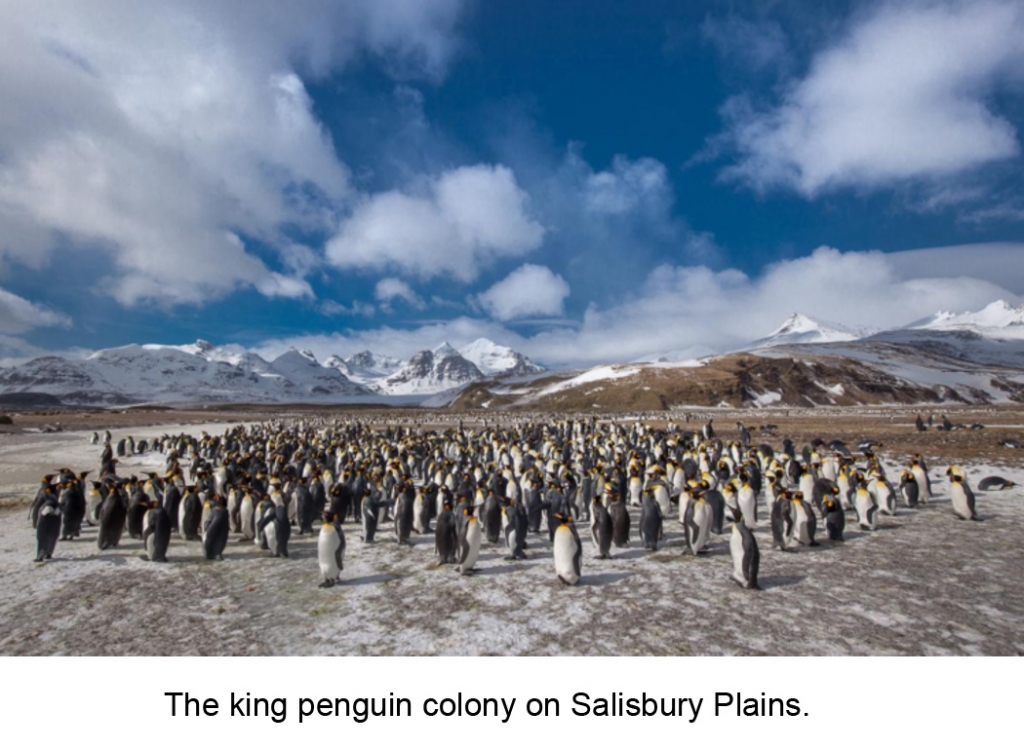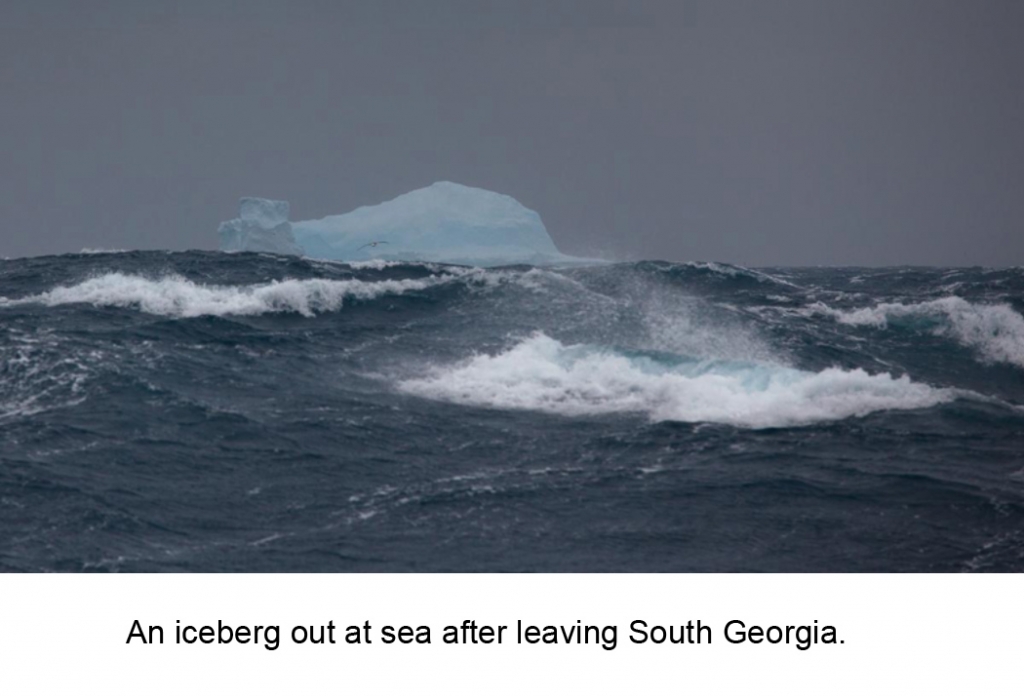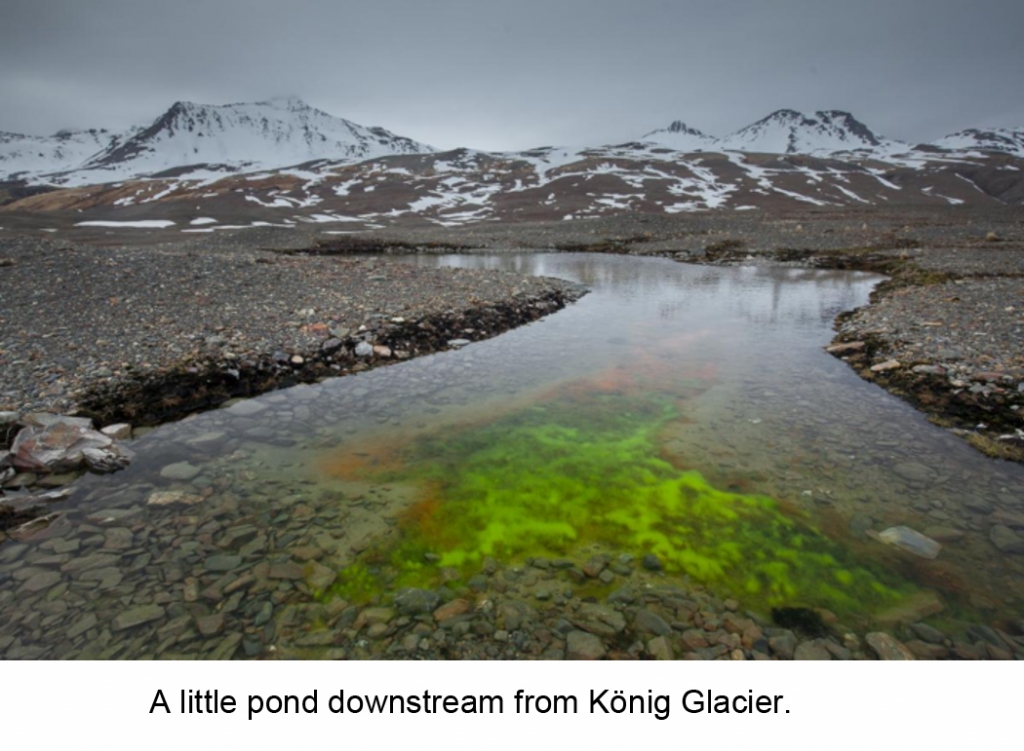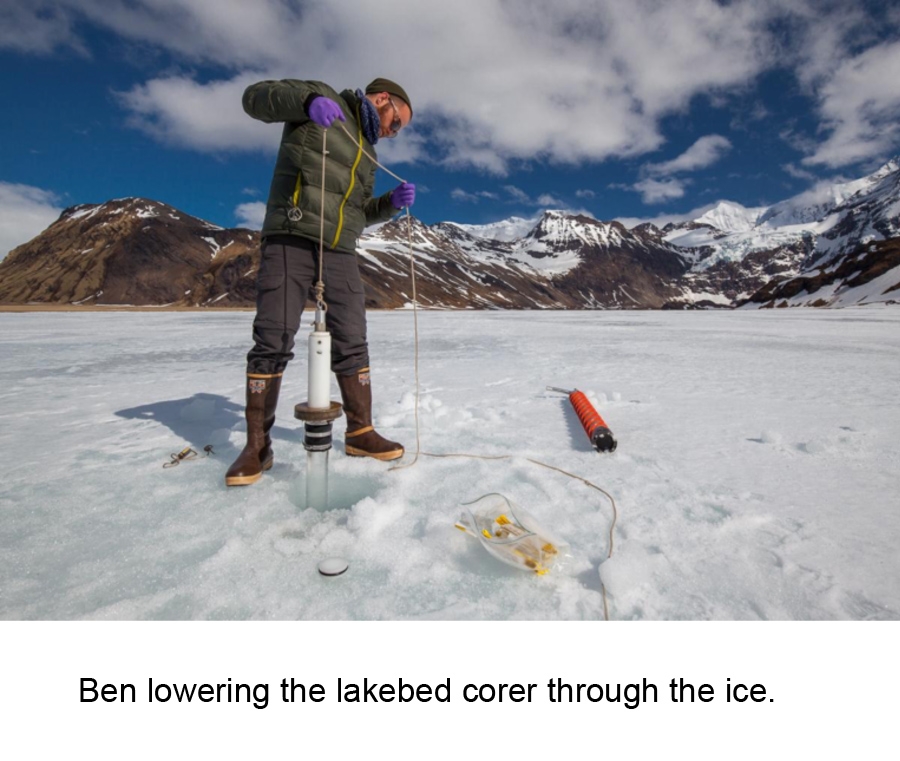The Westwind Expedition: South Georgia Leg 2015
The Westwind Expedition: South Georgia Leg 2015
Field Team Members:
Dr. Paul Mayewski, Jeff Auger, Benjamin Burpee, Mariusz Potocki – Climate Change Institute University of Maine, USA
Dr. Gino Casassa Rogazinski – Universidad de Magallanes, Punta Arenas, Chile
James Hooper – University of Wollongong, Australia
Thomas Smallwood – Imperial College, London, UK
Skip Novak – Pelagic Australis, Cape Town, South Africa
Sept. 24, 2015 – Nov. 4, 2015 – Briggs Glacier, South Georgia Island
From 29 September to 4 November 2015, three CCI students, Mariusz Potocki (Mario), Jeff Auger, and Ben Burpee embarked on a 5-week expedition to the Briggs Glacier on South Georgia Island under the leadership of principal investigator Paul Mayewski. South Georgia Island is a unique site due to its remote location in the South Ocean, 864 miles east of the Falkland Islands and nothing east to South Africa another 3300 miles. South Georgia is approximately 100 miles long and between 1 to 22 miles wide with elevations reaching over 9,500 feet making this small island (1077 square miles) stand out in the Southern Ocean.
Due to its location within the west to east atmospheric flow in the mid-latitude southern hemisphere (~54°S), South Georgia is an important location for obtaining climate records within the Southern Ocean with the potential to reveal changes in atmospheric circulation before and after anthropogenic forcing from greenhouse gases and South American and Australian mining activity. Meteorological observations in the southern mid-latitudes and Southern Ocean are sparse, spanning less than 40 years therefore, ice cores from islands such as South Georgia are important since they have the potential to provide longer records of past climate and air chemistry. Lastly, the glaciers on South Georgia are rapidly melting in response to warming making scientific research expeditions to this site critical. This is the second CCI expedition to South Georgia. During the first expedition (see Kuli Expedition: climatechange.umaine.edu/kuli_south_georgia_expedition) served as a reconnaissance mission searching for potential drilling sites but due to extreme weather conditions the expedition team did not reach all of their goals.
The primary objective of the 2015 expedition was to conduct additional field reconnaissance for a potential future deep ice core drilling site, drill and process a 15-meter ice core, and collect ice penetrating radar data. The second objective was to establish an interdisciplinary program of research for future studies on South Georgia Island, in accordance with the CCI’s general principles and goals. Therefore, Ben Burpee, a lake ecologist PhD candidate, spearheaded a side project in order to describe lake microbial communities across the island and how they vary in response to water chemistry under the guidance of Principle Investigator Dr. Jasmine Saros (UMaine). Together, the ice core and lake survey projects will help in the description of recent climate change occurring in South Georgia Island and the ecological responses to these changes.
The resulting 15.38 m ice core will be analyzed at the Climate Change Institute to determine if the sampling site is appropriate for future investigation and the retrieval of a longer core that would provide a paleoclimate record spanning potentially hundreds to thousands of years. A well preserved record would include seasonal and annual variability of chemistry and isotopes including perhaps rare occurrences of melt layers within the samples, which would be evidence of minor surface melt.
To complete these objectives Paul, Mariusz, and Jeff were joined by Gino Casassa (Chile) Professor and glaciologist from the Universidad de Magallanes, who operated the radar; James Hooper (UK), a Ph.D. candidate from the University of Wollongong, Australia studying the impact of dust transport on climate; Thomas Smallwood (UK), a Ph.D. candidate at the Imperial College, London; and Skip Novak (South Africa), owner of Pelagic Australis who guided the glacier traverse team. For lake sampling, Ben was assisted in the field by First Mate of the Pelagic Australis, Thomas Geipel.
We started our expedition from the University of Maine on September 29. Paul, Mariusz, Jeff, and Ben first travelled to Punta Arenas, Chile where they met Gino Casassa, Skip Novak, and James Hooper. From here, the team flew to the Falkland Islands, which is located in the South Ocean between the tip of South America (435 miles) and South Georgia (864 miles). Though the intended layover in Punta Arenas was to be 2 days, high crosswinds prevented our aircraft from landing in Stanley, Falkland Islands extending the layover another 2 days, putting pressure on the timing of the expedition. On October 5, the team landed in the Falkland Islands, where they met with Thomas Smallwood and the crew – Skipper David Roberts, First Mate Thomas Geipel and Second Mate Elizabeth “Lizzie” Fitzsimmons.
Traveling from the Falkland Islands to South Georgia took 4 days aboard the 74’ sailing vessel, Pelagic Australis, owned and designed by Skip Novak. The crew was very knowledgeable and inspired confidence as the team crossed the tricky South Ocean waters. On October 12, amidst choppy seas and high winds, we landed in King Haakon Bay, close to Sir Ernest Shackleton’s original landing site during his famour 1916 ocean travel from Elephant Island to South Georgia (Fig. 1).
On October 14, it was decided to pull the sleds laden with scientific and camping gear to a site 280 meters above sea level directly inland from King Haakon Bay. The temperatures was ~34°F and winds from the SSE ranging from 10-13 mph.
The following day, starting early, the group of seven (Paul, Skip, Gino, James, Mariusz, Jeff and Thomas) skied to the gear depot then on to Camp 1 on the Murray Snowfield, under the navigation of Skip and Mario. Our goal was to continue to the top of Briggs Glacier, another 5 kilometers away and over 400 meters higher in elevation, but due to extreme blizzard conditions tents were pitched in the middle of Murray Snowfield. Winds sustained over 30 mph with gusts nearing 60 and temperatures around 20°F resulting in a wind chill below 0.
The next day, the team skied towards Camp 2, on the divide between the Briggs and Esmark Glaciers at 858 meters. At this location, based on the GPR runs the ice thickness is ~400 meters. The drill location is on an ice divide, which is the line that separates one glacier flowing away from another (the oldest ice layers are found at depth beneath ice divides). Based on the field observations and glacier morphology this was determined to be the best drill site.
A 15.38-meter snow/firn core was successfully drilled using the 2-inch Stampfli Electromechanical Ice Core Drill and sampled by the ice core team (Mario, Jeff, James and Paul). The core was cut into ~10-centimeter sections, scraped, and placed into pre-cleaned bottles in the field for safe and clean transportation. The drilling day started with winds from the WNW bringing fairly wet snow making core processing difficult, i.e. making the ice core sticks inside the core barrel. However, the winds shifted at 11:45 am from WNW to southerlies bringing cold Antarctic air making drilling conditions perfect. In total, 162 ice core samples, 13 surface samples (Fig. 3), and 10 kilometers of radar data that followed the transverse were collected. On October 18, the ice core team skied out to Possession Bay, just north of King Haakon Bay, where they camped for the last night on the island.
While the ice coring crew conducted their fieldwork, Ben conducted his survey of 12 lakes on the north coast. The goal was to collect samples for biological and ecological analysis. This survey will provide an assessment of how South Georgia glacier melt affects lake water chemistry and microbial ecology. In the northern hemisphere, glaciers can subsidize lakes with high concentrations of NO3–, a bioavailable nitrogen source, but it is unknown to what extent Sub-Antarctic glaciers behave as nutrient sources.
Skipper Dave Thomas navigated Pelagic Australis around the north side of South Georgia such that all target lakes could be sampled despite the weather and short amount of time available. Ben accessed lakes from Pelagic Australis by boating to shore and hiking inland 1-2 miles, on average. A couple of lakes with open water were sampled using a blow-up raft, while others were frozen and could only be waded into or accessed by chipping or drilling through the ice. The ice coring team joined Ben and Thomas Geipel’s sampling efforts once they returned from ice core drilling.
October 19 and the following four days were utilized for touristic and educational activities at King Edwards Point (KEP), located next to the relict Grytviken whaling station, and talking with researchers based at the KEP scientific research station. Ben and Mariusz continued lake sampling, accessing four lakes in the area, three of which were glacially fed. Dr. Paul Mayewski gave a talk about South Georgia ice core research to the staff at KEP. Before the research team began their return trip to the Falkland Islands, on October 24 they stopped at Salisbury Plains to observe a King Penguin colony and Prion Island to look at the nesting Wandering Albatrosses. Finally, the team returned to the Falklands on October 28, and returned to the University of Maine on November 2.
Snow/firn cores are to be analyzed at the Climate Change Institute for trace elements, soluble ions, and stable isotopes. The goal with this data is to establish a chemical record and estimate the relative atmospheric contributions from crustal, oceanic, and anthropogenic sources to be used as a proxy for reconstructing atmospheric conditions before and after anthropogenic influences. Glaciochemical investigations from South Georgia ice cores may reveal trends and shifts in atmospheric composition and circulation patterns (e.g. variability, dust sources, and El Nino Southern Oscillation (ENSO) activity). In addition, ice core records would span the last decades corresponding with the rapid rises in South American industry/agricultural activities and dust emission.
Lake sediment samples (from Ben’s lake survey) will be analyzed microscopically to determine the presence and abundance of different algal taxonomic groups. A 16 cm lake core that was collected may provide a paleoecological record of past algal communities, potentially dating back hundreds of years ago. Similar to the ice core, this record could indicate changes in climate or atmospheric nutrient deposition. The lake core is different from an ice core however, with a much coarser temporal resolution, and an ecological interpretation of climate (based on indicator species and algal community structure).
Lake water chemistry data will indicate nutrient concentrations (NO3–, NH4+, total nitrogen and total phosphorus), concentration and sources of dissolved organic carbon, ion concentrations, salinity, and turbidity. Microbial enzyme activities, that reveal microbial nutrient demand, will also be assessed. Together, these data will help in determining if South Georgian glacially-fed lakes differ in their nutrient concentrations compared to snow-fed ones, and whether these differences are important determinants for algal communities in lakes. If so, this project will provide important understanding of glacially-fed lake ecosystems in Sub-Antarctica. Positive results would justify future research in order to characterize these systems more completely and compare them to their Northern Hemisphere counterparts.
Acknowledgements
We extend our gratitude to those who made the Westwind South Georgia Leg 2015 Expedition possible. This was a collaborative program between Pelagic Australis, the Climate Change Institute, the University of Magallanes (Chile), University of Wollongong (Australia), and Imperial College (UK). We want to thank Skip Novak, the owner of Pelagic Australis, for support and guiding, and Paul Mayewski for his support and expertise in field research and logistics. We would also like to thank the Pelagic Australis crew Captain David Roberts, First Mate Thomas Geipel, and Second Mate Lizzy Fitzsimmons for their expert navigation and providing a comfortable environment during time spent aboard. We thank Gino Casassa Rogazinski for supplying equipment and conducting the radar survey. We would like to extend our gratitude to Thomas Smallwood and James Hooper for participation in the field program, logistics and sampling. Support for Ben Burpee was supported by NSF-DGE1144423 (IGERT; to Dr. Jasmine Saros).
In particular, we thank the South Georgia and South Sandwich Islands government, especially Jennifer Lee and Richard McKee for granting the permits and providing advice. We are thankful to the Falkland Islands government, South Atlantic Environmental Research Institute (SAERI), and the residents of King Edward Point (KEP) for their hospitality. We finally thank Marcelo Arévalo for generously providing equipment and support in Punta Arenas.
Pictures provided by Mariusz Potocki, Jeff Auger, and Ben Burpee.



